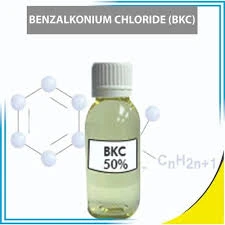Diethylenetriamine Pentamethylene Phosphonic Acid
The Importance of Diethylenetriamine Penta Methylene Phosphonic Acid in Water Treatment
Diethylenetriamine penta methylene phosphonic acid (DTPMPA) is a highly effective chelating agent that has gained significant attention in various industrial applications, particularly in water treatment processes. Its unique chemical structure allows it to bind with metal ions, making it a powerful agent for controlling scale formation and corrosion in water systems. This article explores the properties, applications, and benefits of DTPMPA, highlighting its importance in maintaining water quality and efficiency in various sectors.
DTPMPA belongs to the family of phosphonic acids and features five phosphonic acid groups attached to a diethylenetriamine backbone. This configuration provides the compound with multiple active sites capable of chelating metal ions such as calcium, magnesium, and iron. The effective chelation prevents these ions from precipitating, which is crucial in environments where water hardness can lead to scale formation in pipes, boilers, and heat exchangers.
One of the primary applications of DTPMPA is in boiler water treatment. Boilers are prone to scale deposits, which can drastically reduce their efficiency and lead to costly repairs. By adding DTPMPA to the feedwater, industries can prevent the formation of scale, ensuring that boilers operate at optimal efficiency. This not only improves energy conservation but also extends the lifecycle of the equipment, representing significant cost savings for industrial operators.
diethylenetriamine penta methylene phosphonic acid

In addition to boiler water treatment, DTPMPA is widely used in cooling water systems. These systems are often subjected to corrosion and scaling, which can severely impact their performance. The introduction of DTPMPA helps to mitigate these issues by stabilizing metal ions and preventing them from forming deposits on heat transfer surfaces. By doing so, DTPMPA enhances heat exchange efficiency and reduces the risk of system failure due to corrosion.
Another notable application of DTPMPA is in the field of desalination and wastewater treatment. In these processes, the chelating properties of DTPMPA play a critical role in removing heavy metals and other pollutants from water. This is essential for meeting regulatory standards and ensuring that treated water is safe for discharge or reuse. By facilitating the removal of harmful substances, DTPMPA not only aids in environmental protection but also contributes to sustainable water management practices.
The environmental impact of using DTPMPA is also a subject of interest. As a biodegradable compound, DTPMPA is considered less harmful to aquatic life compared to other chemical treatments. This biocompatibility makes it an attractive option for industries looking to minimize their ecological footprint while maintaining effective water treatment processes.
In conclusion, diethylenetriamine penta methylene phosphonic acid plays a vital role in various water treatment applications. Its ability to chelate metal ions effectively helps to prevent scale formation and corrosion in industrial systems, thus enhancing efficiency and reducing maintenance costs. Furthermore, its use in environmental applications supports sustainable practices while ensuring compliance with regulatory standards. As industries continue to prioritize water quality and conservation, DTPMPA will undoubtedly remain a crucial component in the quest for effective and environmentally friendly water treatment solutions.
-
The Power of Isothiazolinones in Modern ApplicationsNewsMay.08,2025
-
Flocculants in Water TreatmentNewsMay.08,2025
-
Flocculants and Chemical Solutions: What You Need to KnowNewsMay.08,2025
-
Flocculants and Chemical Solutions: A Growing IndustryNewsMay.08,2025
-
Essential Chemicals: Polymaleic Anhydride and MoreNewsMay.08,2025
-
Acrylic Polymers: Essential Solutions for IndustryNewsMay.08,2025





